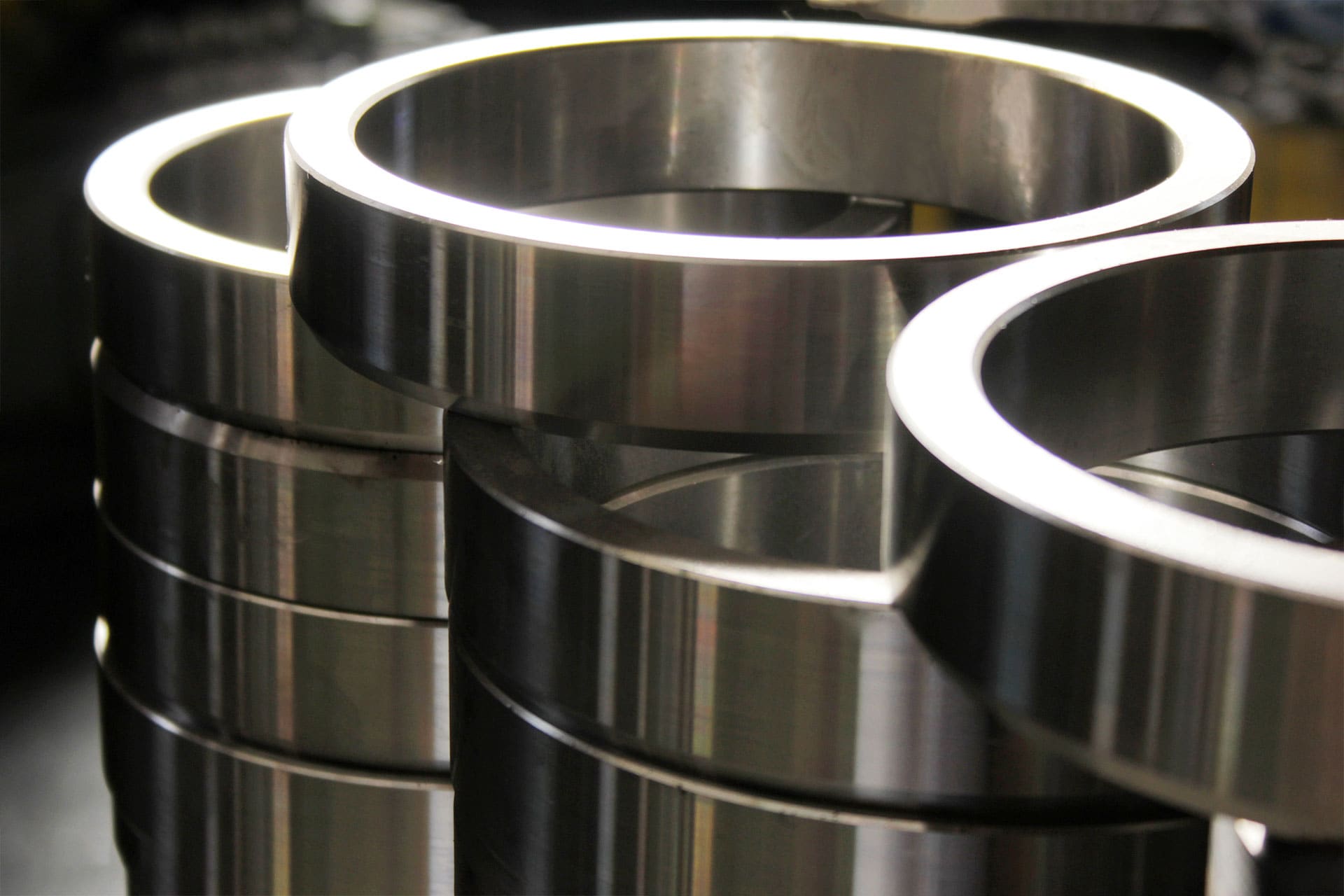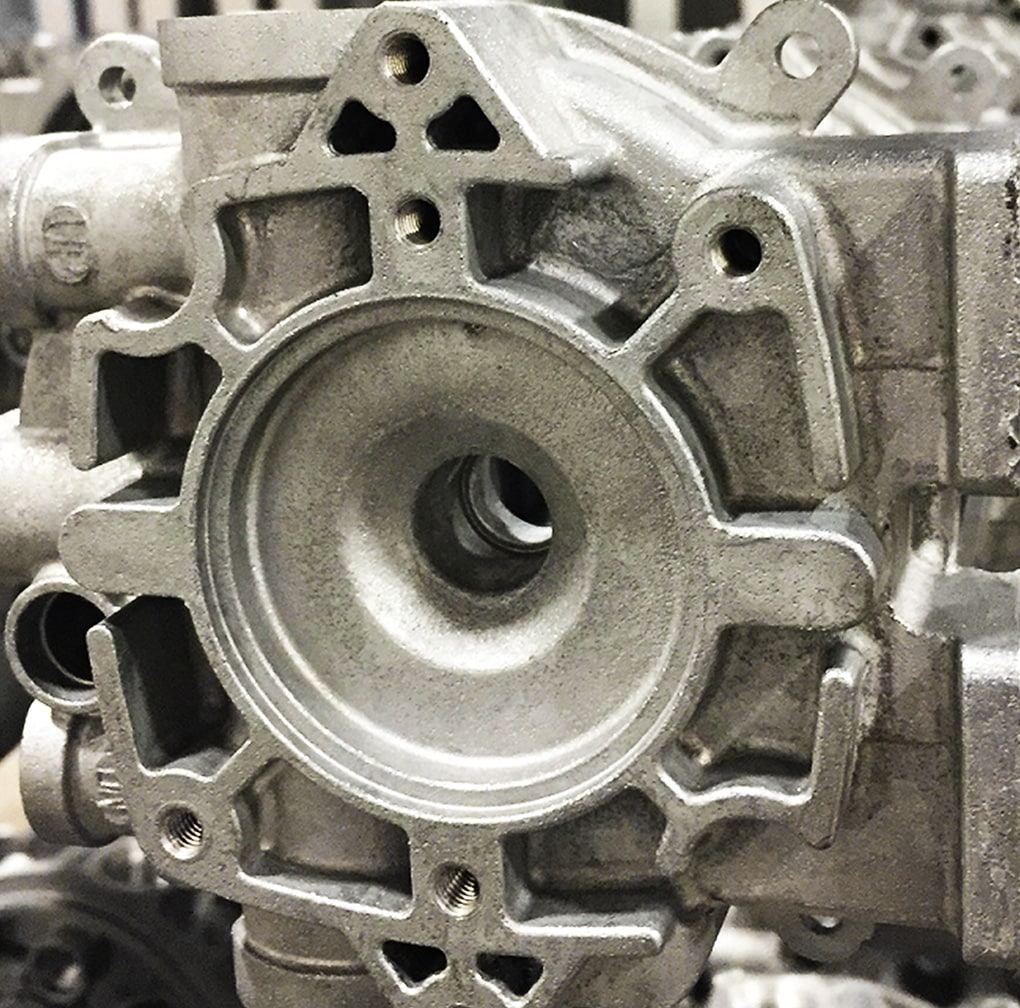The main features that make Aluminum Castings a popular choice
Revealing the Perks and Practical Uses of Aluminum Castings in Today's Market
Light weight aluminum castings have come to be progressively pertinent in numerous sectors because of their special qualities. Their light-weight nature and resistance to corrosion make them suitable for demanding applications. Furthermore, the superior strength-to-weight ratio supplies substantial advantages in style and manufacturing. As markets proceed to discover their potential, the full extent of aluminum castings' advantages and applications stays to be completely revealed. What exists in advance for this flexible product?
The Lightweight Benefit of Aluminum Castings
Lots of materials are utilized in production, light weight aluminum castings stand out largely due to their lightweight residential properties. This particular makes aluminum spreadings an appealing option for numerous sectors, particularly in aerospace and automobile applications, where weight decrease is essential for boosting gas efficiency and efficiency. The lightweight nature of light weight aluminum allows manufacturers to create components that are simpler to mount and manage, ultimately minimizing labor prices.
Furthermore, the ability to generate complex shapes without significant weight charges allows designers to innovate while maintaining structural integrity. Aluminum spreadings can efficiently change larger materials, causing considerable cost savings in shipping and functional prices. Their light-weight benefit also contributes to boosted item longevity, as lighter parts usually cause decreased damage on equipment. On the whole, the light-weight homes of aluminum spreadings offer suppliers with an affordable edge, fostering improvements in product design and performance across numerous industries.

Outstanding Deterioration Resistance
Aluminum spreadings have an all-natural resistance to oxidation, which significantly enhances their durability in numerous atmospheres. This integral residential property not just adds to their longevity yet likewise aligns with the light-weight advantage that light weight aluminum supplies. Therefore, light weight aluminum castings are increasingly identified for their outstanding deterioration resistance in numerous applications.

Normally Resistant to Oxidation
Among the standout characteristics of aluminum spreadings is their remarkable deterioration resistance, which originates from a natural oxidation process. When exposed to air, aluminum responds to develop a slim, protective layer of aluminum oxide. This layer functions as a barrier versus additional oxidation and safeguards the underlying metal from destructive elements such as moisture and salts. Unlike other steels, this oxide layer is self-repairing; if harmed, it swiftly reforms when subjected to air. This unique building boosts the durability of aluminum spreadings in numerous environments, making them excellent for applications in industries such as aerospace, auto, and marine. Consequently, the natural resistance to oxidation greatly minimizes upkeep prices and boosts the dependability of aluminum castings sought after conditions.
Lightweight Longevity Benefit
The lightweight nature of aluminum spreadings contributes significantly to their toughness, making them a useful selection in various sectors. This phenomenal sturdiness is mostly credited to aluminum's natural resistance to corrosion, which is improved even more via anodizing and other surface treatments. Unlike numerous steels, aluminum does not rust; instead, it develops a safety oxide layer that shields it from ecological damages. This residential property is specifically beneficial in sectors such as vehicle and aerospace, where weight decrease is important without endangering toughness. Furthermore, the long life of light weight aluminum castings minimizes upkeep costs and substitutes, providing economic advantages gradually. Their lightweight resilience and deterioration resistance position light weight aluminum spreadings as a premium material for modern-day manufacturing applications.

Superior Strength-to-Weight Ratio
An exceptional feature of aluminum castings is their remarkable strength-to-weight ratio, which makes them extremely desirable in different applications. This innate home enables aluminum castings to withstand significant anxiety while remaining lightweight, a critical consider markets such as aerospace, auto, and production. Engineers often choose light weight aluminum spreadings for elements that require both longevity and lowered weight, boosting gas effectiveness and efficiency.
The high strength-to-weight ratio additionally promotes the layout of intricate shapes and structures, making light weight aluminum castings versatile for complex applications. The capacity to keep architectural integrity under difficult conditions assurances long life and integrity in products, from aircraft frameworks to auto components. This benefit contributes to the expanding pattern of using light weight aluminum castings in ingenious layouts, ultimately leading to enhanced capability and efficiency across varied industries. Subsequently, the remarkable strength-to-weight ratio of aluminum castings positions them as a pivotal product in contemporary design and manufacturing.
Cost-Effectiveness in Manufacturing
Cost-effectiveness in aluminum casting production is mainly achieved with decreased material waste and efficient production procedures. By optimizing designs and utilizing advanced methods, makers can minimize excess product use while maintaining quality criteria. This technique not just reduces manufacturing prices yet also adds to extra lasting why not check here practices within the industry.
Lowered Material Waste
Minimizing material waste in light weight aluminum casting procedures significantly improves manufacturing performance. By maximizing the design and manufacturing methods, companies can reduce excess scrap and enhance resource usage. This reduction in waste not just decreases material costs yet additionally contributes to a more lasting production version. The capability to recycle light weight aluminum further supports cost-effectiveness, enabling producers to reclaim and recycle products without compromising high quality. As the industry progressively concentrates on sustainability, decreased material waste lines up with about his environmental goals while concurrently increasing success. Eventually, reliable usage of raw materials reinforces the competitive placement of services in the marketplace, making aluminum castings a beneficial choice in different applications. The critical approach to decreasing waste shows a dedication to both economic and eco-friendly duty.
Effective Manufacturing Processes
While typical manufacturing procedures can incur considerable prices, light weight aluminum spreading offers a more efficient alternative that enhances total manufacturing earnings. This method lessens product waste and permits accurate control over the production process, resulting in decreased labor and functional costs. The ability to generate intricate forms with less steps additionally streamlines production, contributing to shorter lead times. In addition, aluminum's lightweight nature and excellent thermal conductivity enable power cost savings during manufacturing and in the last application. By using contemporary casting innovations, makers can achieve higher throughput without compromising high quality. Aluminum spreading stands out as an economical service, making it an eye-catching alternative for businesses intending to optimize their manufacturing processes in today's affordable market.
Versatility Across Industries
Aluminum spreadings show impressive convenience throughout different industries, as they can be tailored to satisfy certain demands and applications. In the automotive sector, light weight aluminum castings are used in engine blocks, transmission real estates, and wheels, using lightweight yet sturdy services that boost gas performance. The aerospace sector additionally profits from aluminum castings, using them in architectural parts and engine components because of their strength-to-weight proportion.
In the customer products field, manufacturers use aluminum spreadings for items varying from pots and pans to furniture, providing both aesthetic appeal and functionality. The electronic devices industry utilizes light weight aluminum spreadings for housings and warmth sinks, ensuring reliable thermal administration. In addition, the construction sector leverages aluminum spreadings for structural parts and building elements, enhancing durability and layout adaptability. This broad applicability highlights aluminum castings as a vital resource, meeting the diverse demands of various markets while maintaining high performance and integrity.
Sustainability and Environmental Influence
As sectors progressively prioritize lasting methods, aluminum spreadings become an environment-friendly selection because of their recyclability and reduced environmental impact. Aluminum is one of the most recycled products internationally, with the capability to be repurposed multiple times without deterioration of top quality. This characteristic substantially minimizes the demand for raw materials and power consumption connected with main aluminum production, which is energy-intensive.
In addition, light weight aluminum castings contribute to light-weight layouts, resulting in sustain efficiency in transport applications such as auto and aerospace sectors. Their resilience and resistance to rust expand product life-spans, better minimizing waste and resource usage over time. Additionally, numerous producers are embracing liable sourcing and eco-friendly production methods, enhancing the sustainability of light weight aluminum casting procedures. In general, aluminum spreadings stand for a functional option Find Out More for services aiming to reduce their environmental impact while accomplishing efficiency and efficiency.
Advancements in Light Weight Aluminum Casting Technologies
Recent improvements in light weight aluminum casting innovations have significantly improved the effectiveness and high quality of manufacturing processes. Advancements such as 3D printing and progressed mold-making methods have made it possible for makers to produce elaborate layouts with decreased product waste. This change not just boosts the accuracy of cast elements but likewise reduces lead times, enabling fast prototyping and faster market access.
The incorporation of sophisticated computer simulations aids in anticipating prospective flaws during casting, leading to higher-quality results. The usage of lightweight alloys has also added to the development of stronger, much more durable items, satisfying markets ranging from vehicle to aerospace
Additionally, automated casting processes have emerged, minimizing human mistake and increasing production rate. Collectively, these advancements are transforming the light weight aluminum spreading landscape, driving greater competitiveness and sustainability in production. As industries remain to advance, these innovations will certainly play an important function in conference future needs for effectiveness and high quality.
Often Asked Questions
How Do Light Weight Aluminum Castings Contrast to Other Steels in Terms of Thermal Conductivity?
Aluminum castings exhibit exceptional thermal conductivity contrasted to numerous steels, such as steel and iron - Aluminum Castings. Their lightweight nature and efficient warmth distribution make them excellent for applications requiring effective thermal administration in numerous industries
What Are the Typical Defects Located in Light Weight Aluminum Castings?
Typical flaws in light weight aluminum spreadings include porosity, shrinking, incorporations, and surface area irregularities. These concerns frequently emerge from improper cooling rates, insufficient mold and mildew layout, or contaminations, affecting the general quality and efficiency of the end product.
Can Light Weight Aluminum Castings Be Recycled, and Exactly how?
Light weight aluminum castings can be recycled effectively. The process entails collecting, melting, and reforming the aluminum, which decreases waste and saves sources. This reusing adds to sustainability while keeping the material's residential properties for future use.
What Are the Regular Lead Times for Aluminum Spreading Manufacturing?
Usually, preparations for aluminum spreading manufacturing variety from 2 to 6 weeks, depending upon variables such as complexity, tooling needs, and manufacturing volume. Efficiency can boost with recognized provider partnerships and maximized production procedures.
Just how Does the Surface Area Finish Affect Aluminum Casting Efficiency?
The surface coating considerably impacts light weight aluminum casting performance by affecting corrosion resistance, visual quality, and friction characteristics. A smoother surface boosts longevity and functionality, while a rougher texture can boost adhesion for succeeding layers or therapies.
Numerous products are utilized in production, aluminum castings stand out largely due to their light-weight residential properties. When revealed to air, light weight aluminum reacts to form a thin, protective layer of light weight aluminum oxide. Cost-effectiveness in light weight aluminum spreading manufacturing is mainly attained via reduced product waste and effective manufacturing procedures. Decreasing product waste in aluminum spreading procedures substantially improves manufacturing performance. Inevitably, reliable usage of raw products strengthens the competitive setting of organizations in the market, making light weight aluminum spreadings a desirable option in different applications.